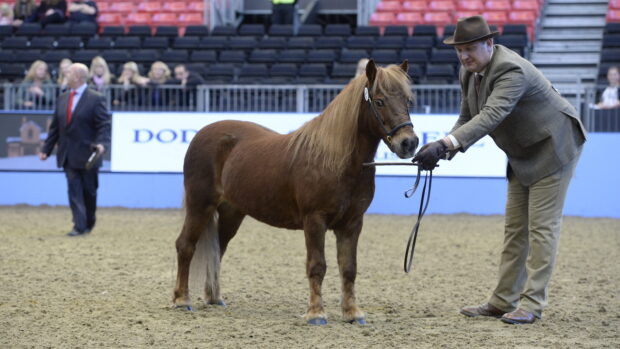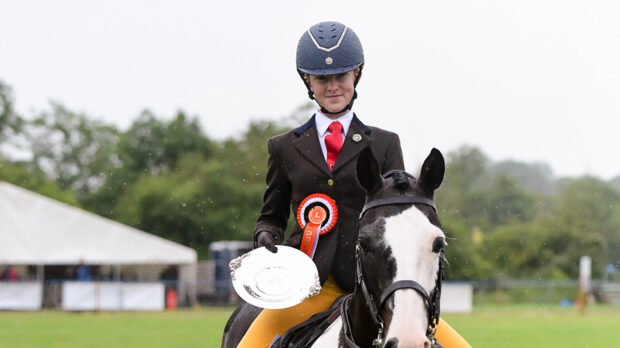In the 1860s, the famous trotting stallion, Comet, was introduced to improve the Dales’ trotting ability. Clydesdale blood was then added in the early 1900s to produce a heavier type of ‘vanner’that was capable of powering farm machinery.
During the World War I and II, the army was quick to recognise the breed’s worth as an artillery and pack horse. But, following World War II when fuel became available again and heavier ponies were nolonger in demand, hundreds of the breed were slaughtered for their meat. It’s thanks to a handful of committed breeders that the Dales later recovered.
Conformation and action
- Bright and docile eyes
- Alert and mobile small ears
- A short-coupled, muscular back
- Great depth of girth
- Powerful quarters and hocks
- Strong limbs
- Silky feathering on the heels
- Excellent large, round and hard blue feet, open at the heel
- Abundant mane and tail
- Active, straight and true movement with a high action and long stride. The hocks and quarters generate a great deal of propulsion and power, especially at trot.
Did you know?
Dales ponies are renowned for their strength and good limbs, which enable them to carry loads well out of proportion to their size. This made them popular for trotting races, when it wasn’t uncommon for ponies to trot one mile (1.6km) in three minutes, carrying an adult man.
A mature pony can easily carry a 16 stone rider or pull a one tonne load.
Courageous with a calm temperament, the Dales pony possesses great stamina. It is quiet to handle, sure-footed and sensible but active to ride.
Economical tokeep, the breed has a hardy constitution and is rarely ill.
The predominant colour is black, although sometimes bay and brown, and a few greys, occur. Roans are rare. Dappled bay was referred to locally as ‘heckberry’. A star and/or snip and white up to the hind fetlock are permitted, although ponies with a blaze or white fore leg are downgraded.
The preferred height is 14hh-14.2hh. Although ponies above and below this height are not downgraded, it’s still considered a fault.
By the 1950s, the number of Dales ponies had dwindled so low that one year only four ponies were registered. Today, the Dales is classified as a category III rare breed (‘vulnerable’) and about 120 ponies are registered annually. There are currently around 1,100 mares, 102 stallions and 500 geldings.
The Dales is said to handle more like a cob than a pony. The breed has the ability to adapt to individual riders – it’s a steady mount for novices but a lively ride for themore advanced.
For further information, visit www.dalespony.org or see the June issue of HORSE magazine




